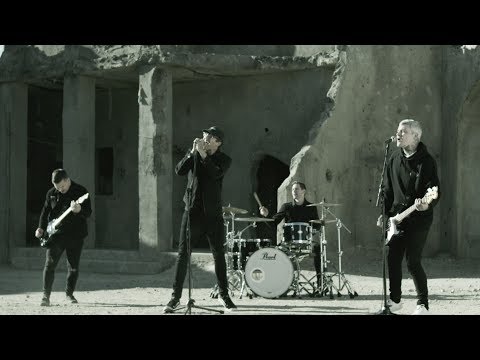Learning to play a popular instrument like guitars, basses, or drums are both a fun and decompressing hobby to enjoy! Interested in learning how to play an electric or acoustic guitar? Awesome! While this article doesn’t teach you how to play it will definitely help with understand one of many aspects that make up a guitar’s sound. More specifically, we are going to dive into fret guitars and explain how many frets are on electric guitars, and acoustic guitars.
Acoustic guitars typically have fewer number of frets (19) when compared to electric guitars (22-24). However, the guitar fret count can range anywhere from 12 to 24 frets, depending on the size and style of the guitar. Why would you want more or less frets on a guitar? The higher or lower number of a guitar’s fret count will give you more or less scale options.
When you press down on a string against a fret, it sends vibrations through the neck and into the body of the guitar, which create the sound that we hear. Read on to learn more about the different types of frets and how they affect the sound of your guitar.
What are guitar frets? (1)
Frets are made up of a nickel/silver alloy wire located on the fretboard/fingerboard. The fretboard is to the long wooden piece that runs down the length of the guitar known as the neck. Frets are the raised metal bars that run vertically down the length of a guitar’s neck. The purpose of these frets are to assist in creating the notes we hear when guitars are being played.
How exactly do frets accomplish this? Well frets divide the length of the string into specific intervals, which helps to determine the pitch of the note that is being played. An example of this are classic rock guitar solos! You’ll notice a many number of them will play on the frets closest to the pickup of the electric guitar neck for a higher tone. As opposed to upper fret access which plays a lower tone.
Speaking of sound, frets are used when you press down on a string against it, when you strum that specific string on electric guitar necks or acoustic guitar necks, a vibration will be sent into body of the guitar. This is what you will be learning when trying to play many different songs.
How many frets are on a guitar?
As I mention above there are normally 19-24 frets on standard electric or acoustic guitars. The distance between the frets is measured in intervals of one half inch. The first fret is located at the point where the fretboard meets the neck of the guitar. The last fret is located at the point where the fretboard meets the body of the guitar. The strings of the guitar are spaced out evenly between the frets. This allows for a smooth and consistent playing experience.
Guitar Fret Count
Diving a little deeper, acoustic guitars tend to have 19 frets but that doesn’t mean you can easily play all 19. So at about the 12 to 14 fret mark is where the neck will meet the body of the guitar, this where having larger hands give you a better opportunity to reach further down toward the neck pickup to play the remaining frets on the body. This is why you may sometimes hear people refer to “12 fret” or 14 fret guitars, this is counting the frets between the body and the nuts. As for electric guitars, their fret number ranges between 21 and 24. Typically at the 22 mark, the neck of an electric guitar will connect to the body around the 17th fret mark.
The importance of frets on guitars
Frets are important on electric and acoustic guitars because they needed to improve and create the notes that are played. By having a fret guitar, it makes it easier to locate and place your fingers on the strings in order to play certain notes for a scale or song. This is especially helpful for beginners who are interested in learning how to play guitar. Without frets, it would be much more difficult to create the correct notes and would likely take a lot longer to learn how to play guitar proficiently.
You may be asking who or why would you want to play on guitars without frets? While the fret guitar was introduced to assist in learning and playing, it can actually limit your range of sound. With that being said, fretless guitars are not something that should be worried about if you are just starting out. But to give you some insights, these guitars are rare and difficult to play and offer a unique range of sound that can really get the creative music flowing.
How to count the frets on a guitar
Each fret-line is one half-step higher in pitch than the previous one. To find the pitch of a note, you can use the “12-bar blues” progression. The first 12 frets of a guitar correspond to the notes in the key of C. After the 12th fret, the notes repeat themselves starting at A. For example, If you’re playing a song on an electric or acoustic guitar in the key of D, you would need to go up to the 13th fret to find the D note. The higher up on the fretboard you go, the higher the pitch of the notes will be.
Why fret placement is important when learning how to play the guitar
When you’re first start playing the guitar, fret placement is usually the most important things to learn. If your frets are not in the correct place, it can be difficult to make the proper notes and chords. This is why it’s and important step to know where each fret is on your electric or acoustic guitar, to place your fingers in the correct spot.
Keep in mind there are a couple different things to consider when it comes to fret guitar placement. The first is the distance between and the amount the frets your guitar has – this will vary depending on the type of guitar you’re playing. The second thing is how high or low the tone of the note, while the fret could be the same the string you’re playing on will be different. This depends on the key of the song, and the many different notes that are needed.
How to best use all of the frets on your guitar
There are a number of different ways that you can use all of the frets on your guitar. One way is to experiment with different intervals, scale length, and chords. You can also use them to create melodies and solos. Another way to use the many different frets on acoustic or electric guitars is to experiment with different techniques, such as slides, bends, and vibrato. Whichever technique or style suites you best, make sure to experiment, have fun, and find what makes you happy. Also there are no set rules when it comes to shredding on electric guitars, or serenading on an acoustic, so have fun and experiment!
How to properly take care of your guitar’s frets (2)
There are a few things you can do to help protect your guitar’s frets and keep them in good condition. First, always use a soft cloth when wiping down the frets. If the frets have gotten really dirty, you can also use a mild detergent or soap if needed. But make sure to avoid using harsh chemicals or solvents, as they can damage and shorten the lifespan the guitar’s frets.
Another thing you can do to help protect the frets is to use a capo when you’re not playing. What is a capo you may be thinking? Well it’s a small clamp that is used on the neck of the guitar to technically “shorten” the length of the strings raising the pitch volume. It can also be used to help keep the strings from vibrating against the frets and causing wear and tear.
Finally, be sure to tune your guitar regularly. This will help keep the strings in good condition and minimize wear on the frets.
How to fix a fret that is damaged or worn down on your guitar
If you have a fret that is damaged or worn down on your guitar, you can fix it by using the following steps:
1. Remove the strings from the guitar.
2. Use a file to smooth down the fret until it is flush with the guitar neck.
3. Re-string the guitar and tune it to your desired pitch.
4. Test the fret to make sure that it is playable.
5. Repeat these steps as needed.
Conclusion
There are a number of different things to consider when it comes to frets on a guitar. The most important thing is to make sure that the frets are in the correct place, and that they are in good condition. You can protect the frets by using a capo when you’re not playing, and by tuning your guitar regularly. If a fret is damaged or worn down, you can fix it by using a file to smooth it down until it is flush with the guitar neck.
References
- What guitar frets are
https://www.liveabout.com/what-guitar-frets-are-and-why-they-matter-4686563 - Guitar maintenance
https://www.sweetwater.com/sweetcare/articles/guitar-care-and-maintenance-guide/




















